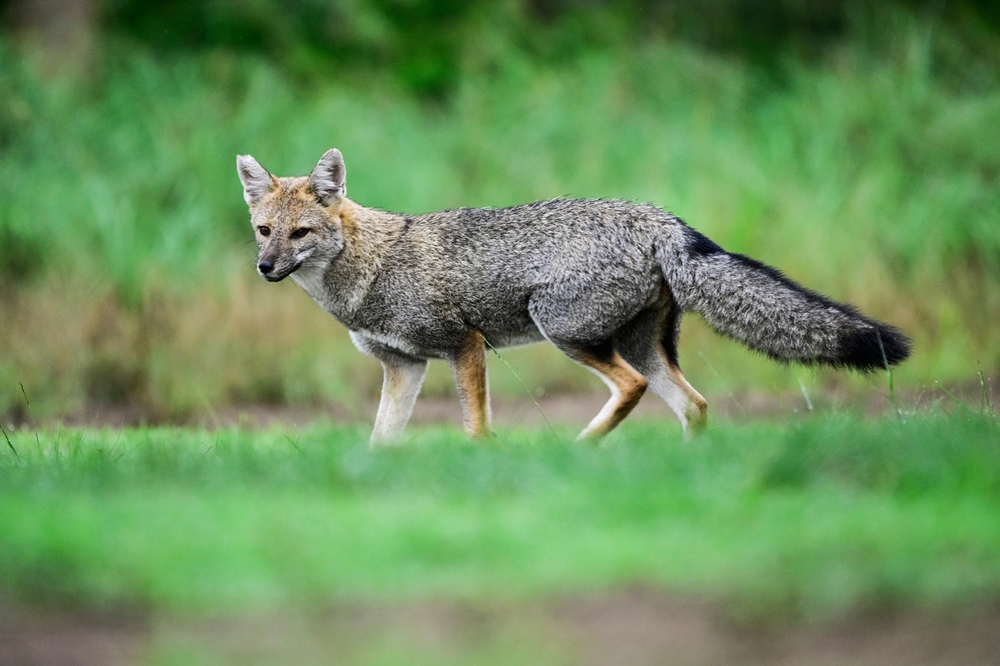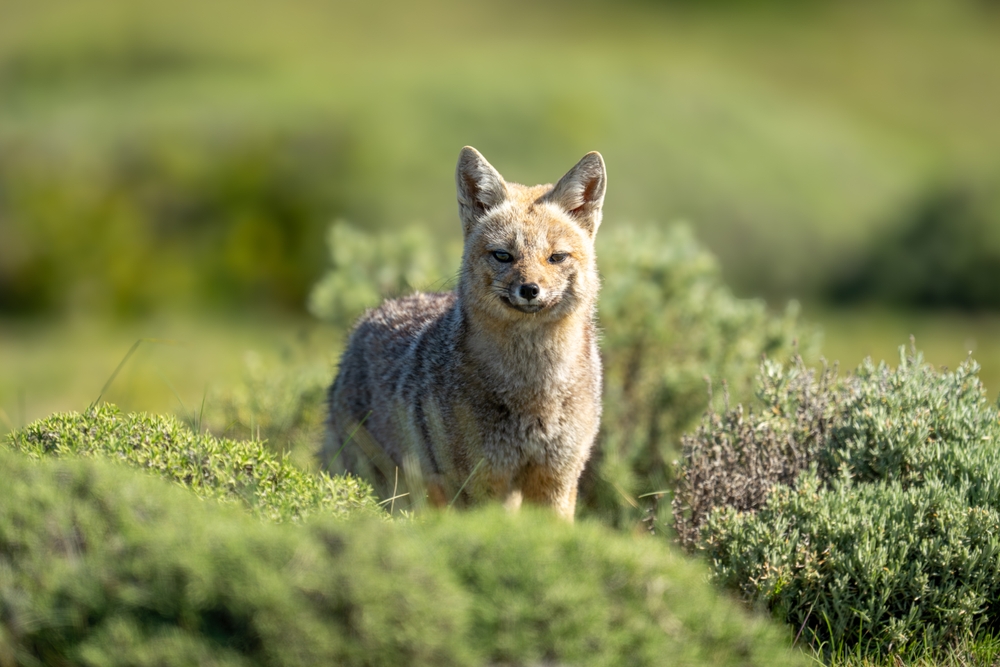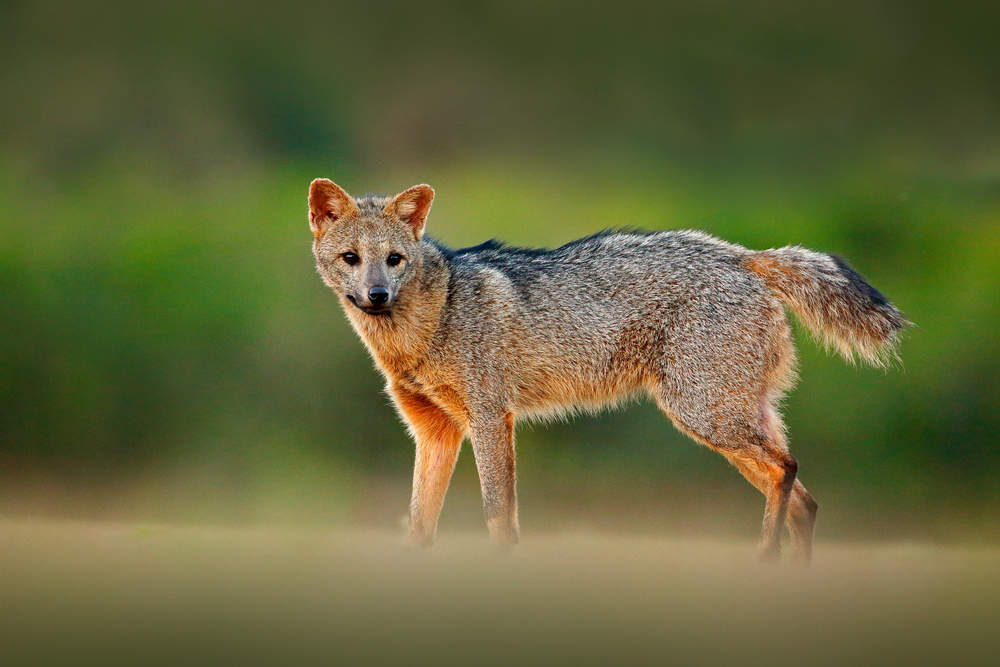About
The Pampas gray fox (Lycalopex gymnocercus), also known as the Azara’s fox, is a small and adaptable South American canid native to the open plains and scrublands of Argentina, Uruguay, Paraguay, Bolivia, and southern Brazil. Despite its name, it is not a true fox of the Vulpes genus but belongs to the Canidae family and the genus Lycalopex, which includes several South American “false foxes.”
This species typically weighs between 4 and 8 kg (9 to 18 pounds) and measures 50 to 70 cm (20 to 28 inches) in body length, with a bushy tail adding an additional 30 to 40 cm (12 to 16 inches). Its dense fur is a mix of gray, black, and white, with reddish tones on the legs and ears. A dark dorsal stripe often runs along the back and tail.
The Pampas gray fox is highly adaptable and thrives in diverse environments, from open grasslands and agricultural fields to low forests and brushlands. It is primarily nocturnal and solitary, although pairs may be seen during breeding season. Its diet is omnivorous and opportunistic, including small mammals, birds, insects, carrion, fruits, and cultivated crops, especially during leaner seasons.
Breeding occurs once per year, typically with litters of 3 to 5 pups born in underground dens. The young stay with the parents for several months as they learn to forage. Though often shy, this species is increasingly observed near human settlements and farmlands, sometimes resulting in conflict over poultry predation.
Classified as Least Concern by the IUCN, the Pampas gray fox maintains stable populations across much of its range, though habitat loss, road mortality, and persecution still pose localized threats. It plays an important ecological role as both predator and scavenger in the Pampas and Chaco ecosystems.
Threatened:
Extinct
Critically Endangered
Endangered
Vulnerable
Near Threatened
Least Concern










































































